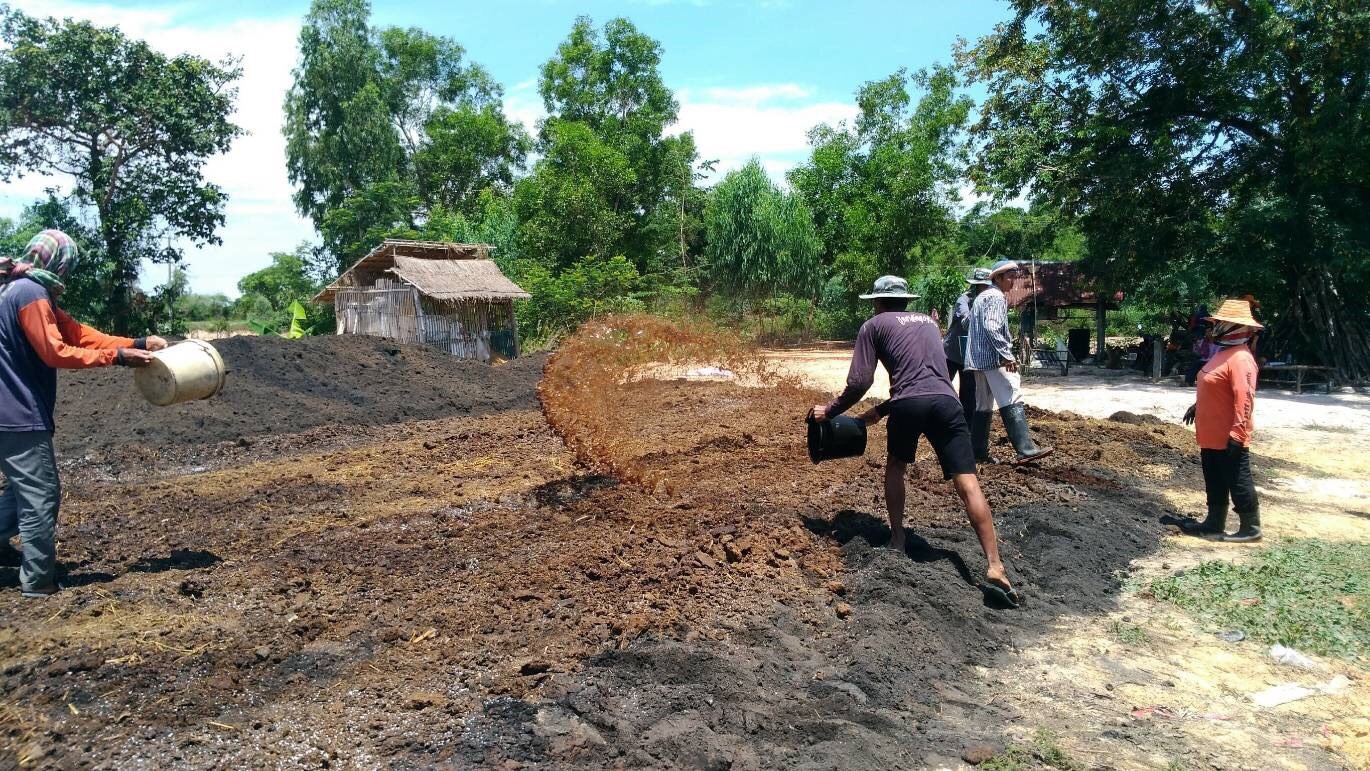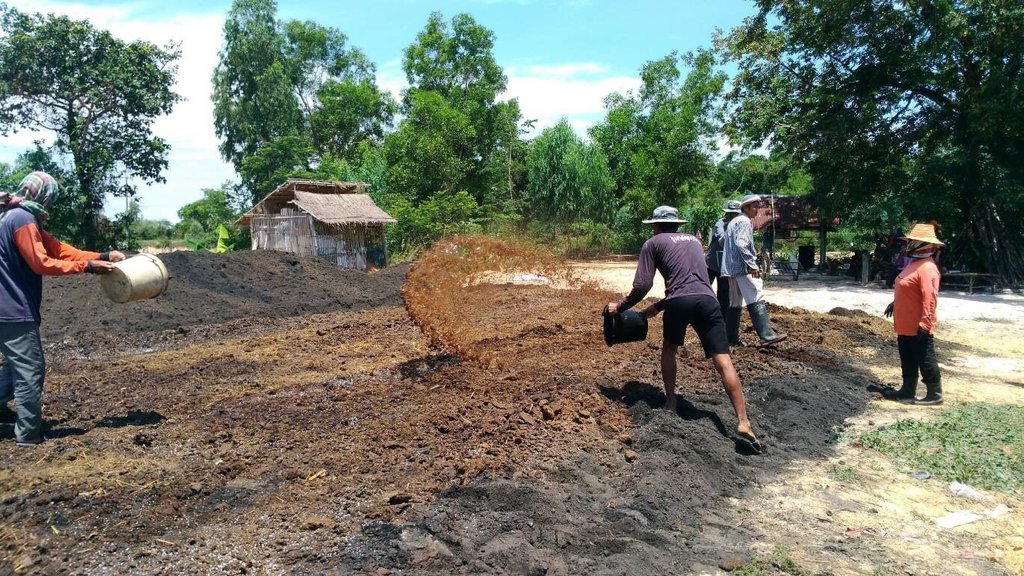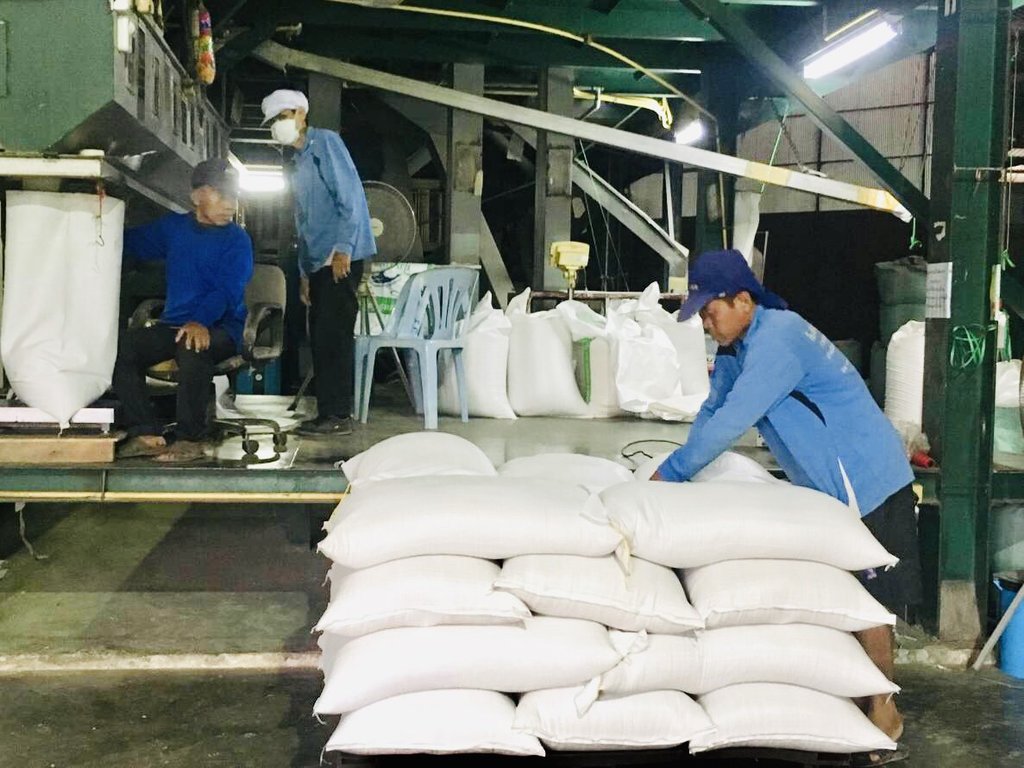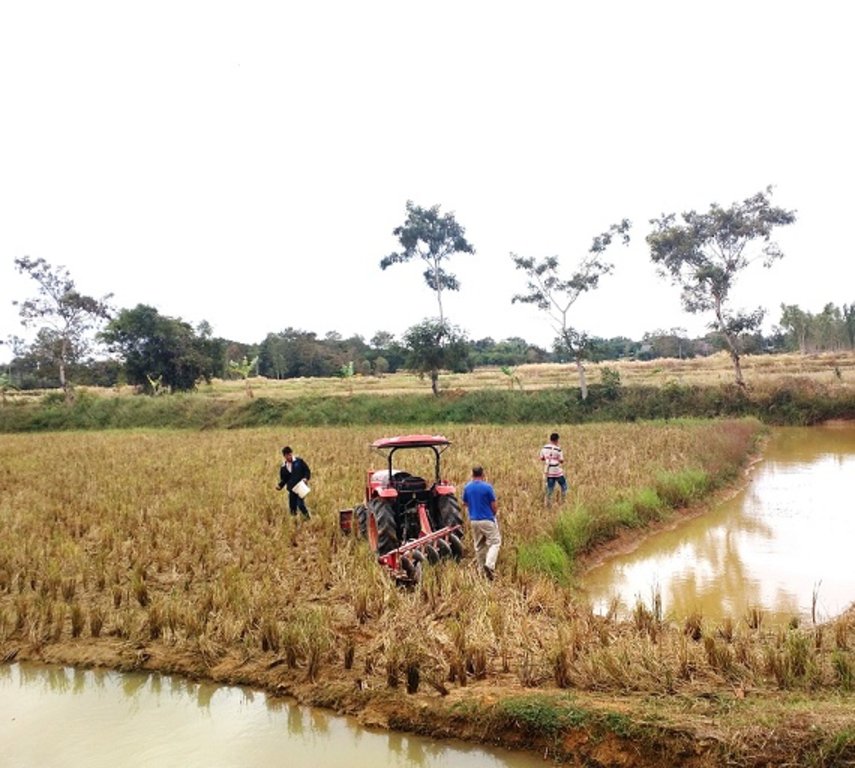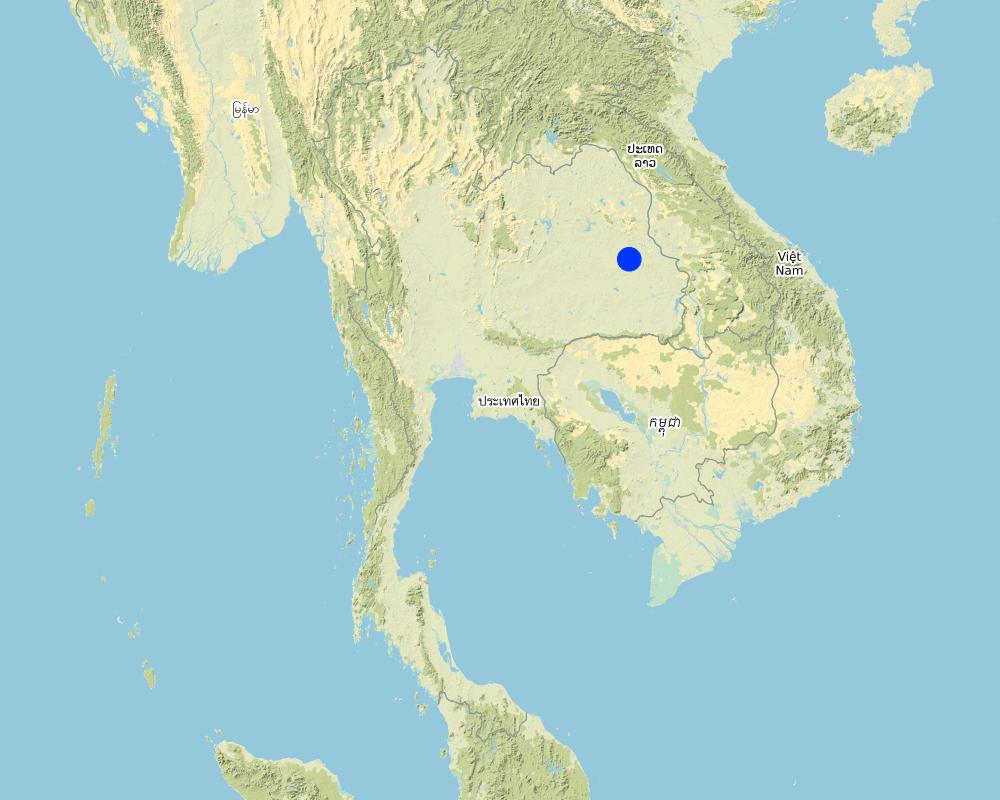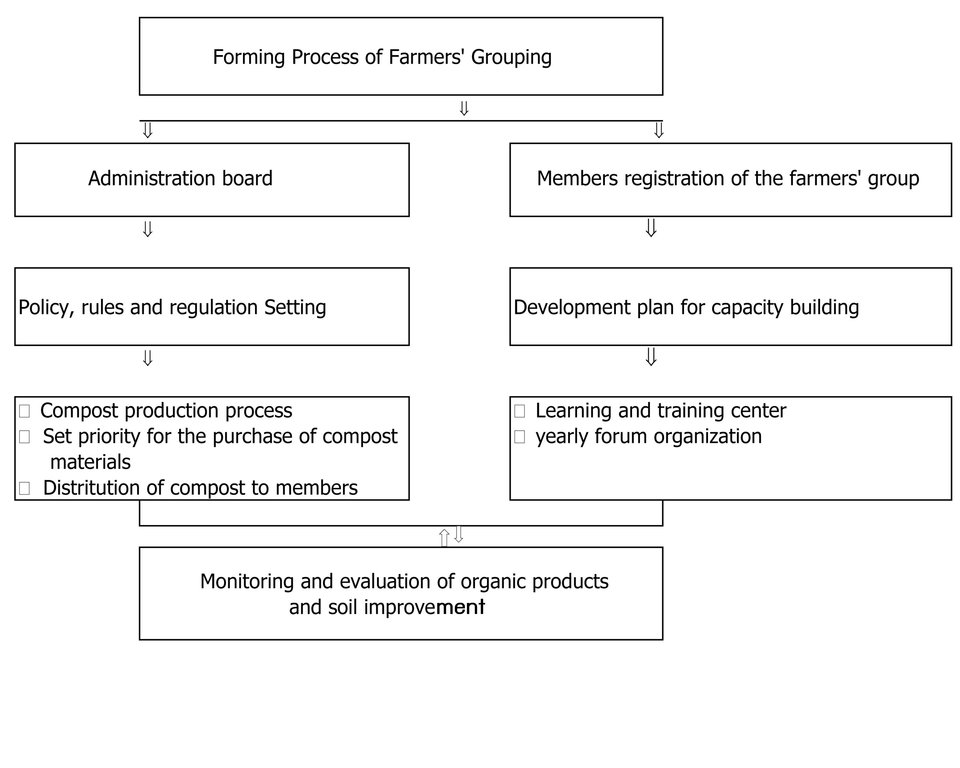Strengthening Farmers' Self-Grouping Participation in Organic Rice Production [Thailand]
- Creation:
- Update:
- Compiler: Yuthasong Namsai
- Editor: –
- Reviewers: Samran Sombatpanit, Rima Mekdaschi Studer, William Critchley
approaches_4201 - Thailand
View sections
Expand all Collapse all1. General information
1.2 Contact details of resource persons and institutions involved in the assessment and documentation of the Approach
Key resource person(s)
land user:
Samsee Mun
Rak Thammachat Club (Naso Rice Farmer Group)
Ban Sok, Naso Sub-district, Kutchum District, Yasothon Province 35140
Thailand
land user:
Kaewsai Pongmarin
+66-81-2383883
Rak Thammachat Club (Naso Rice Farmer Group)
45 Moo 4, Ban Pawai, Naso Sub-district, Kutchum District, Yasothon Province
Thailand
land user:
Polchai Moon
Rak Thammachat Club (Naso Rice Farmer Group)
66 Moo 2, Ban Sokkumpoon, Naso Sub-district, Kutchum District, Yasothon Province
Thailand
land user:
Thongnoi Kumfong
Rak Thammachat Club (Naso Rice Farmer Group)
40 Moo 2, Ban Sokkumpoon, Naso Sub-district, Kutchum District, Yasothon Province
Thailand
SLM specialist:
Namsai Yutthasong
Yuthasong2559@gmail.com
Land Development Office Region 4
SLM specialist:
Sangkeaw Kanyaporn
Kanyaporn8488@gmail.com
Land Development Office Region 4
SLM specialist:
Hansugjaijareon Kanokwan
Kanokwanhans@gmail.com
Land Development Office Region 4
SLM specialist:
Kaoya Putchanee
putchanee99@gmail.com
Land Development Office Region 4
Thailand
national consultant:
Arunin Somsri
ssarunin@gmail.com
Land Development Department
Thailand
Name of project which facilitated the documentation/ evaluation of the Approach (if relevant)
Decision Support for Mainstreaming and Scaling out Sustainable Land Management (GEF-FAO / DS-SLM)Name of the institution(s) which facilitated the documentation/ evaluation of the Approach (if relevant)
Land Development Department LDD (Land Development Department LDD) - Thailand1.3 Conditions regarding the use of data documented through WOCAT
The compiler and key resource person(s) accept the conditions regarding the use of data documented through WOCAT:
Yes
2. Description of the SLM Approach
2.1 Short description of the Approach
A group of 253 farmers have participated in organic rice production covering an area of 6,000 rai (960 ha) since 1989. The organic rice has been certified as meeting the standards of OACT and IFOAM; more than 3,000 tons/yr have been exported.
2.2 Detailed description of the Approach
Detailed description of the Approach:
The distinctive character of this farmers’ group is the production of organic crops by using organic fertilizers from agricultural by-products and residues from organic-fermented liquid kitchen wastes and green manure. The group has been successfully supported by private and public organizations. The main objectives are to produce organic rice for export for higher income, with the aim of better health for farmers and consumers – through avoiding agricultural chemical residues. The establishment of a learning and training center has been an important tool to scale-up and scale-out the activities; the certification of the products has been necessary to promote exports. The stages of implementation were as follows: (1) formulate and prioritize policy and plans by the committee of 20 farmers from the group; (2) organize meetings for the 253 farmer members to determine rice varieties and after-rice vegetables; (3) purchase raw materials for making compost from three sources of funds: first from the group by selling compost to non-members; second through the private export companies paying a premium of approx. 300,000 THB/yr to the group; and third, government agencies supporting materials for learning and training. This model of using organic fertilizers to produce organic crops is being scaled-out to 33 farmer groups in various districts of Yasothon Province. The main crop is organic rice, which is collected at the center for export. Implementation includes planting, tending the crop, harvesting, certification, and selling. The 253 farmers in the group produce and sell their own products in the local markets, and to restaurants and hospitals, while private companies purchase the rice for export. The Land Development Department provides the knowledge for making compost and organic-fermented liquid and also distributes green manure seeds and activators of bacteria and fungi for compost fermentation. The Department of Agricultural Extension provides funding in establishing the learning and training center and materials used for training. The Agricultural Cooperatives Promotion Department supports the development of skills in household accounting. The Department of Groundwater provides groundwater irrigation by drilling wells 30-40 m deep. The Department of Alternative Energy Development and Efficiency provides solar cells as the source of energy. Private organizations such as OACT and IFOAM certify the organic food products. The farmer groups are fully satisfied with the quality of their rice products that meet market demand well, and they get higher incomes as a result. Farmers are healthier and are safe from agricultural chemical residues; all of them are proud of their export quality rice products.
2.3 Photos of the Approach
2.4 Videos of the Approach
2.5 Country/ region/ locations where the Approach has been applied
Country:
Thailand
Region/ State/ Province:
Yasothon
Further specification of location:
Ban Naso, Naso Sub-district, Kutchum District, Yasothon Province, Thailand
Comments:
Each member’s field has similar physical characteristics and a large enough area for the application of rice growing technologies.
Map
×2.6 Dates of initiation and termination of the Approach
Indicate year of initiation:
1989
If precise year is not known, indicate approximate date when the Approach was initiated:
10-50 years ago
Comments:
These concepts are still continuously developing because all over the world there is a growing emphasis on public health and food safety.
2.7 Type of Approach
- traditional/ indigenous
2.8 Main aims/ objectives of the Approach
1) To promote the use of organic fertilizers to produce rice and other crops.
2) To promote this production system for higher income.
3) To promote the grouping of farmers to improve communities in the sense of being self-reliant.
2.9 Conditions enabling or hindering implementation of the Technology/ Technologies applied under the Approach
social/ cultural/ religious norms and values
- enabling
Being a society of organic agriculture lifestyle.
availability/ access to financial resources and services
- enabling
Farmer groups can support themselves since the leaders are strong so that the financial agencies trust and are ready to support.
institutional setting
- enabling
Both government and private agencies support the marketing aspect, production inputs, production designs and knowledge transfer.
collaboration/ coordination of actors
- enabling
The collaboration and coordination among concerned agencies continuously occur.
legal framework (land tenure, land and water use rights)
- enabling
Farmers have legal rights to their lands as title deed, so they get motivation to develop and maintain their land sustainably.
policies
- enabling
The government policies promote organic agriculture.
land governance (decision-making, implementation and enforcement)
- enabling
Their lands are categorized as highly suitable for rice planting.
knowledge about SLM, access to technical support
- enabling
Land Development Department supports the knowledge and organic fertilizer inputs.
markets (to purchase inputs, sell products) and prices
- enabling
1) The Green Net Company has been buying the whole rice yield for packaging.
2) The provincial commerce agencies support the public relations, budget for showrooms and markets.
workload, availability of manpower
- enabling
The mill labourers get the dividend.
other
- enabling
The added values of production are created by making the groups’ trademarks.
- hindering
The consumer markets fluctuated.
3. Participation and roles of stakeholders involved
3.1 Stakeholders involved in the Approach and their roles
- local land users/ local communities
Members of farmers groups
Produce organic crop
- community-based organizations
Naso Sub-district Administration Organization
Public relations
- SLM specialists/ agricultural advisers
Mr. Piyamit Phukongnum, Agricultural Officer
Training
- researchers
Researchers from the Government's research agencies
Training
- teachers/ school children/ students
University students
Farm visit
- NGO
Green Net Organic Company
Purchase products
- private sector
Green markets, food stores, restaurants and modern trade stores
Provide market
3.2 Involvement of local land users/ local communities in the different phases of the Approach
| Involvement of local land users/ local communities | Specify who was involved and describe activities | |
|---|---|---|
| initiation/ motivation | self-mobilization | The group chairman (Mr. Mun Samsee)'s suggestion to recommend the process of non-chemical agriculture. |
| planning | self-mobilization | The chairman and members collaborate to plan the organic fertilizer production. |
| implementation | self-mobilization | The chairman and members produce organic fertilizers together. |
| monitoring/ evaluation | interactive | The private company (Thai export company) monitored the quality of organic rice with emphasis on the preservation of the environment and the sustainability of the program. |
3.3 Flow chart (if available)
Description:
Flow chart shows the implementation of the approach.
Author:
Miss Kanokwan Hansugjaijareon
3.4 Decision-making on the selection of SLM Technology/ Technologies
Specify who decided on the selection of the Technology/ Technologies to be implemented:
- mainly land users, supported by SLM specialists
4. Technical support, capacity building, and knowledge management
4.1 Capacity building/ training
Was training provided to land users/ other stakeholders?
Yes
Specify who was trained:
- land users
If relevant, specify gender, age, status, ethnicity, etc.
Farmers in Naso Sub-district and nearby
Form of training:
- on-the-job
- farmer-to-farmer
Subjects covered:
The creation of an organic agriculture network, the markets for export, livestock, etc.
Comments:
Most of the members have good agriculture knowledge, so it is easy to expand the concepts and market.
4.2 Advisory service
Do land users have access to an advisory service?
Yes
Specify whether advisory service is provided:
- at permanent centres
Describe/ comments:
The Ministry of Agriculture and Cooperatives officers recommend and support the knowledge and production inputs.
4.3 Institution strengthening (organizational development)
Have institutions been established or strengthened through the Approach?
- no
4.4 Monitoring and evaluation
Is monitoring and evaluation part of the Approach?
Yes
Comments:
It is the main goal to obtain the organic agriculture standard certifications.
If yes, is this documentation intended to be used for monitoring and evaluation?
No
4.5 Research
Was research part of the Approach?
Yes
Specify topics:
- sociology
- economics / marketing
- ecology
- technology
Give further details and indicate who did the research:
The government agencies, university students and private development organizations collaborate in research and apply to implementation.
5. Financing and external material support
5.1 Annual budget for the SLM component of the Approach
If precise annual budget is not known, indicate range:
- 10,000-100,000
Comments (e.g. main sources of funding/ major donors):
The working capital in organisation, supporting funds from government agencies and other private sector.
5.2 Financial/ material support provided to land users
Did land users receive financial/ material support for implementing the Technology/ Technologies?
Yes
If yes, specify type(s) of support, conditions, and provider(s):
The government agencies supported production inputs. The Rak Thammachat Club (Naso Rice Farmers Group) support labour wages.
5.3 Subsidies for specific inputs (including labour)
- labour
| To which extent | Specify subsidies |
|---|---|
| partly financed | Self-wages (non-cash labour) |
- equipment
| Specify which inputs were subsidised | To which extent | Specify subsidies |
|---|---|---|
| machinery | partly financed | Packaging factory, seed and contamination screening machine |
| tools | partly financed | |
- agricultural
| Specify which inputs were subsidised | To which extent | Specify subsidies |
|---|---|---|
| seeds | partly financed | Yasothon Land Development Station supports green manure seeds, barrels (for bio-fermented liquid) and molasses. |
| Materials for making compost | ||
If labour by land users was a substantial input, was it:
- voluntary
Comments:
Not only the production inputs but also the labour is important.
5.4 Credit
Was credit provided under the Approach for SLM activities?
Yes
Specify conditions (interest rate, payback, etc.):
Interest rate is 5-7% on average.
Specify credit providers:
Bank for Agriculture and Agricultural Cooperatives, Krung Thai bank.
Specify credit receivers:
Rak Thammachat Club (Naso Rice Farmers Group)
5.5 Other incentives or instruments
Were other incentives or instruments used to promote implementation of SLM Technologies?
Yes
If yes, specify:
The farmer groups determine clearly the trade prices for organic rice.
6. Impact analysis and concluding statements
6.1 Impacts of the Approach
Did the Approach empower local land users, improve stakeholder participation?
- No
- Yes, little
- Yes, moderately
- Yes, greatly
The farmers could support themselves by making compost in the community.
Did the Approach enable evidence-based decision-making?
- No
- Yes, little
- Yes, moderately
- Yes, greatly
The Rak Thammachat Club has experts to recommend the production and market.
Did the Approach help land users to implement and maintain SLM Technologies?
- No
- Yes, little
- Yes, moderately
- Yes, greatly
The group consulted and encouraged the exchange of knowledge among members.
Did the Approach improve coordination and cost-effective implementation of SLM?
- No
- Yes, little
- Yes, moderately
- Yes, greatly
There were meetings continuously to offer comments on development and improvement of the operation of the group.
6.2 Main motivation of land users to implement SLM
- increased profit(ability), improved cost-benefit-ratio
There are certain markets with higher prices.
- reduced land degradation
The continuous application of compost.
- payments/ subsidies
Supporting fund from Green Net Company and banks (low interest rate).
- rules and regulations (fines)/ enforcement
There are rules for controlling the production standard.
- prestige, social pressure/ social cohesion
The group has won the outstanding performance and honour certificate.
- affiliation to movement/ project/ group/ networks
There is integration between organisations.
- environmental consciousness
This group is the prototype of organic rice production.
- customs and beliefs, morals
The members are honest to work with strict regulations.
- enhanced SLM knowledge and skills
The appropriate technologies are always transferred to members.
- aesthetic improvement
The groups have legal trademarks.
6.3 Sustainability of Approach activities
Can the land users sustain what has been implemented through the Approach (without external support)?
- yes
If yes, describe how:
This farmer group aims to produce organic rice warranting the standard certification by both domestic and foreign organizations. The group has been strengthened and has obtained the clear administration principles. The private export companies pay a premium of approx. 300,000 THB/yr to the group; Green Net Cooperative.
6.4 Strengths/ advantages of the Approach
| Strengths/ advantages/ opportunities in the land user’s view |
|---|
| The government agencies continuously supports the production inputs. |
| The organic agriculture system can preserve the environment. |
| The agricultural production attained high quality and could promote public health. |
| This approach could create the added values to rice production. |
| The community has become conscientious. |
| Strengths/ advantages/ opportunities in the compiler’s or other key resource person’s view |
|---|
| The group leaders have been strengthened through training by government agencies, allowing them to lead the group members and enabling others to succeed in organic farming. |
| The group consults and encourages an exchange of knowledge among members. |
| There have been meetings continuously to offer any comments on development and improvement of the operation of the group. |
| The group members can support themselves and produce the best quality rice. |
| There has been a continued integration between various agencies. |
| The organic farming has helped in making farmers’ health better, with better environment and more secure food availability. |
6.5 Weaknesses/ disadvantages of the Approach and ways of overcoming them
| Weaknesses/ disadvantages/ risks in the land user’s view | How can they be overcome? |
|---|---|
| The members are still concentrated in Naso Sub-district area. | More networks have been created. |
| Weaknesses/ disadvantages/ risks in the compiler’s or other key resource person’s view | How can they be overcome? |
|---|---|
| The intervention of government policies affected with the result that some members have withdrawn. | Suggestion has been to create awareness amongst the members of the importance in adhering to organic farming. |
7. References and links
7.1 Methods/ sources of information
- interviews with SLM specialists/ experts
5 members of the group
7.2 References to available publications
Title, author, year, ISBN:
Organic fertilizer, production, using, and quality. Department of Agriculture. 2005. ISBN 974-436-479-3
Available from where? Costs?
http://aglib.doa.go.th/lib/images/Downloads/2549/EB00280.pdf
7.3 Links to relevant information which is available online
Title/ description:
Na-So; This video presents the compost production including the steps of compost making and the place where to apply (especially rice, vegetable, fruit).
URL:
https://www.youtube.com/watch?v=tEbrKL8Zdok&feature=youtu.be
Links and modules
Expand all Collapse allLinks
No links
Modules
No modules


